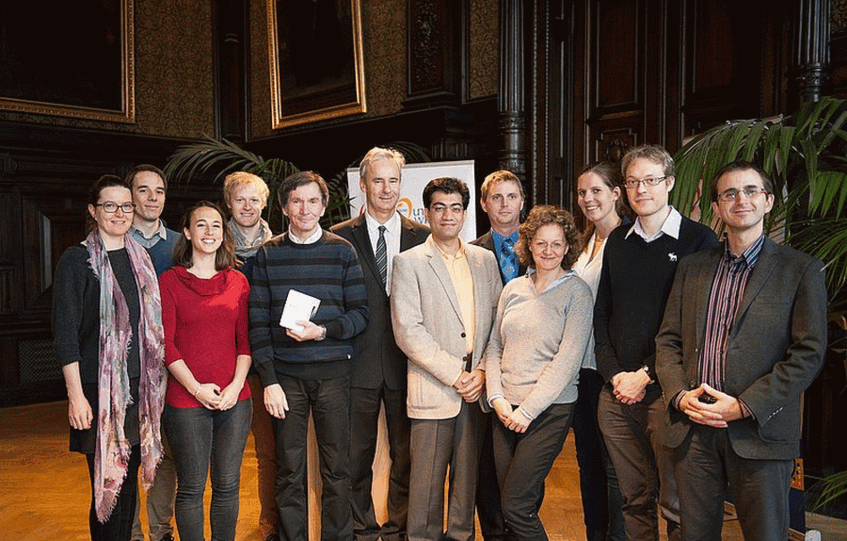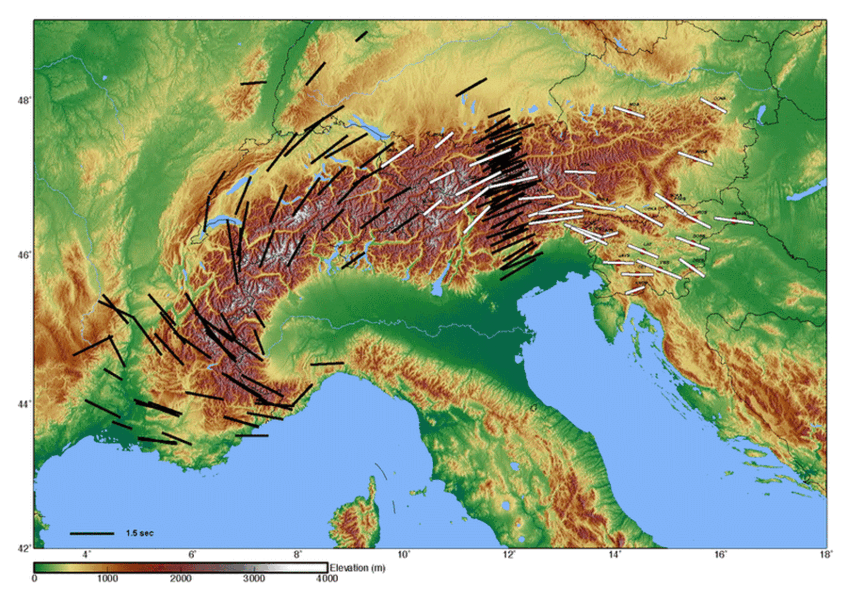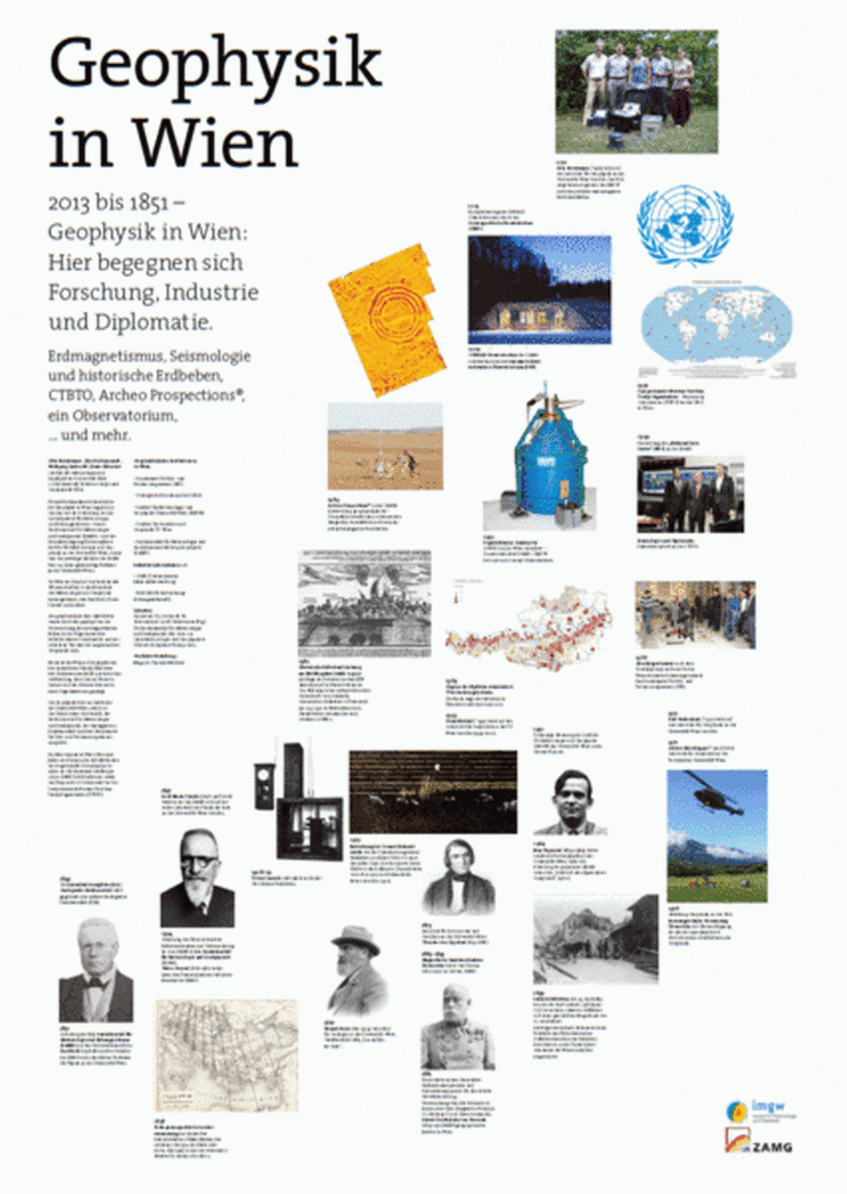What is Geophysics?

© IMGW
What is Geophysics?
Based on physical and mathematical methods geophysics investigates the state and the physical properties of the Earth's interior and its dynamic processes at all spatial and temporal scales.
A key feature of geophysical research is that the parameter distribution within the inaccessible interior of the Earth is determined from observations of space- and time-dependent physical fields at and above the Earth's surface.
Geophysics is of high societal relevance, since it makes significant contributions in the areas of raw materials, energy and natural hazards.
Methods of Geophysics

Map of average SKS splitting measurements for the Alps. White lines show the results for the Eastern Alps (Qorbani et al., 2014) and black lines are from previous studies for the Western (Barruol et al., 2011) and the central Alps (Kummerow and Kind, 2006). Orientation of lines represents anisotropic fast axis azimuth (φ) at each station. Delay times (δt, in sec) are scaled by length of line. (© IMGW)
Methods of Geophysics
Our knowledge of the structure of the Earth is largely due to the findings of seismology, which derives the elastic properties and material conditions of the Earth from the observation of seismic wave fields. Investigating the gravity field of the Earth and its temporal changes leads to conclusions about the density distribution and all dynamic processes associated with deformation and mass transports. The magnetics deals with the magnetic field of the earth , which has its sources mainly in the Earth's core, but also in the high atmosphere, and is affected by the magnetic properties of the upper crust. Interdisciplinarity plays an essential role in geophysics, but also in terms of their related scientific disciplines (e.g. earth sciences, geodesy, astronomy, physics, mathematics).
History of Geophysics in Vienna

(© Melichor)
History of Geophysics in Vienna
The institutional history of geophysics in Vienna begins in July 1851 with the founding of the Imperial Central Institute for Meteorology and Geomagnetism - now Central Institute for Meteorology and Geodynamics ( ZAMG) - and the foundation was laid for the later Institute of Meteorology and Geophysics at the University of Vienna.
Vienna has contributed distinguished scientists in the fields of meteorology and geophysics, such as Karl Kreil, Victor Conrad and others.
Geophysical activities were initially focused on the study of Earth's magnetic field. Later the earthquake service, gravimetry and various topics of applied geophysics were added. Today Viennese geophysical activities are shaped by the particular conditions of the region, such as hydrocarbons, seismic hazard, the Conrad Observatory, and the presence of international organizations.
Institutions in geophysics are, beside our department at the University of Vienna, the Technical University, the Central Institute for Meteorology and Geodynamics (ZAMG), the Geological Survey (GBA), and the Federal Office of Metrology and Surveying (BEV).
In addition, Vienna is the site of a number of industrial companies that make use of methods of applied geophysics, especially hydrocarbon exploration (OMV, RAG), and the Preparatory Commission for the Comprehensive Nuclear-Test-Ban Treaty Organization (CTBTO).
